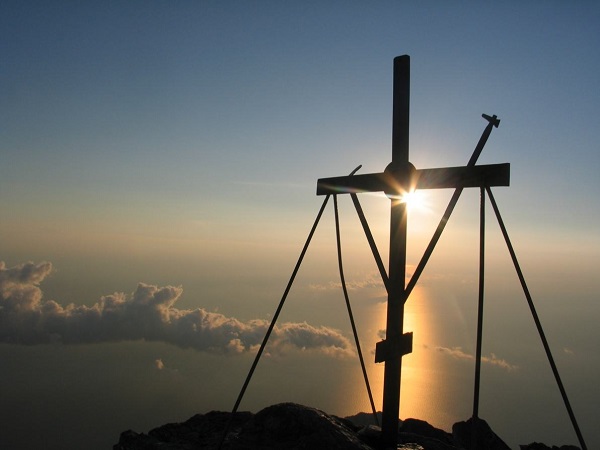Sermon on the Precious and Life-Giving Cross (part 2)
15 September 2017[Previous post: http://bit.ly/2h4ktSM]
But let’s leave all those under the old law and go on to Christ Himself, for Whom and through Whom all things were made and Who said just before the crucifixion that those who don’t take up their cross and follow Him aren’t worthy of Him. He also said that those who wished to follow Him should deny themselves and take up their cross.

The commandment ordains that we have to deny the body and take up our cross. People who live close to God still have their body, but they aren’t particularly attached to it; they use it as a collaborator in necessary things, but when the time comes, they’re prepared to give it up, as they would possessions and any other necessities. This is the word of the Cross and, as such it is a great and really divine mystery, whether it acted in the prophets before the crucifixion or today, after the crucifixion has occurred. How? Because superficially it appears to bring dishonor to those who demean and humble themselves in all things, in pain and agony, who avoid bodily pleasures, who give away their possessions, are themselves the cause of their own poverty. Through the power of God, however, this poverty, pain and dishonor begets eternal glory, inexpressible pleasure, limitless riches, both in this world and in the next.
This, then, is the wisdom and power of God, to triumph through weakness, to raise up through humility and to enrich through poverty. It’s not only the word and mystery of the Cross which is divine and to be venerated, but also a sign, because it’s a holy seal, saving and venerable, sanctifying and perfecting the supernatural and ineffable good things which have been activated in the human race by God, the destruction of the curse and condemnation, remover of mortality and death, provider of eternal life and blessing, the tree of salvation, the royal sceptre the divine trophy against visible and invisible enemies, even if the supporters of heresies are insanely displeased by this. The Lord’s Cross represents the whole dispensation of His bodily presence and contains the whole of the mystery contained therein. It extends to the ends of the earth, embracing everything above, below, around and between. They have not understood that the Lord’s Cross discloses the entire dispensation of His coming in the flesh, and contains within it the whole mystery of this dispensation. Extending in all directions, it embraces everything above, below, around and between. The Lord Himself, when He was going to ascend the Cross, openly referred to it as His lifting up and His glory [John 3.14-15]. And He announced that in His coming and manifestation in the future, this sign of the Son of man would come with great power and glory [Matthew 24.30].
Saint Paul writes to the Colossians: ‘And when you were dead in trespasses and the uncircumcision of your flesh, God made you alive together with him, when he forgave us all our trespasses, erasing the record that stood against us with its legal demands. He set this aside, nailing it to the cross. He disarmed the rulers and authorities and made a public example of them, triumphing over them in it’ (2, 13-15).
Inclining our hearts as well as bending our knees, come , ‘let us worship’, with David the psalmist and prophet, ‘at the place where His feet stood’ (Psalm 132.7 Septuagint), where His all-embracing hands were outspread and His life-giving body was stretched out for our sake. As we venerate and greet the Cross with faith, let us draw the abundant sanctification flowing from it and retain it. Then, at the sublimely glorious future advent of our Lord and God and Saviour Jesus Christ, as we see Him come in glory, we shall rejoice and skip for joy for ever, having attained to a place on His right hand, to the glory of the Son of God crucified in the flesh for us.
To Whom belongs all glory, together with His Father without beginning and the all-holy, good and life-giving Spirit, now and for ever and unto the ages of ages. Amen.






